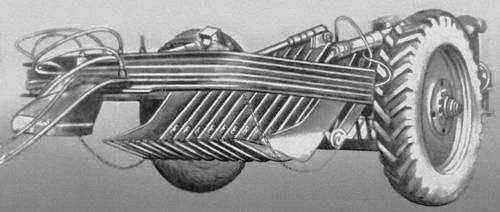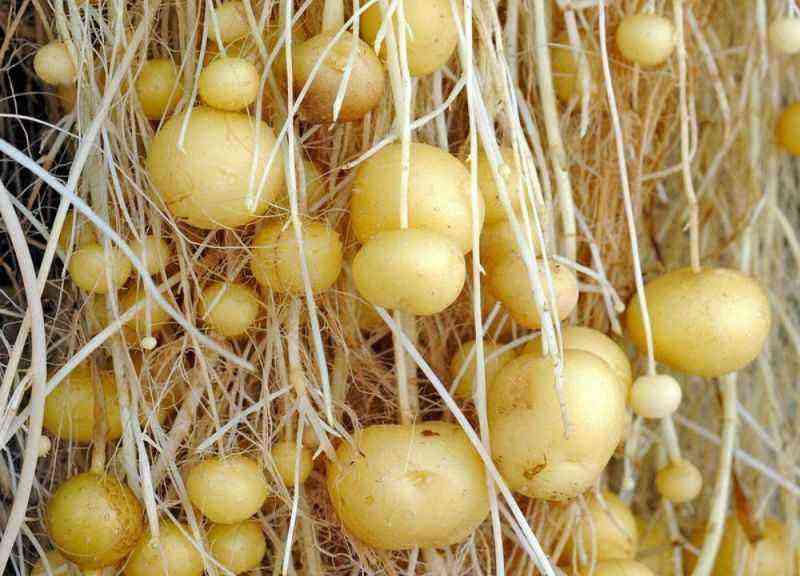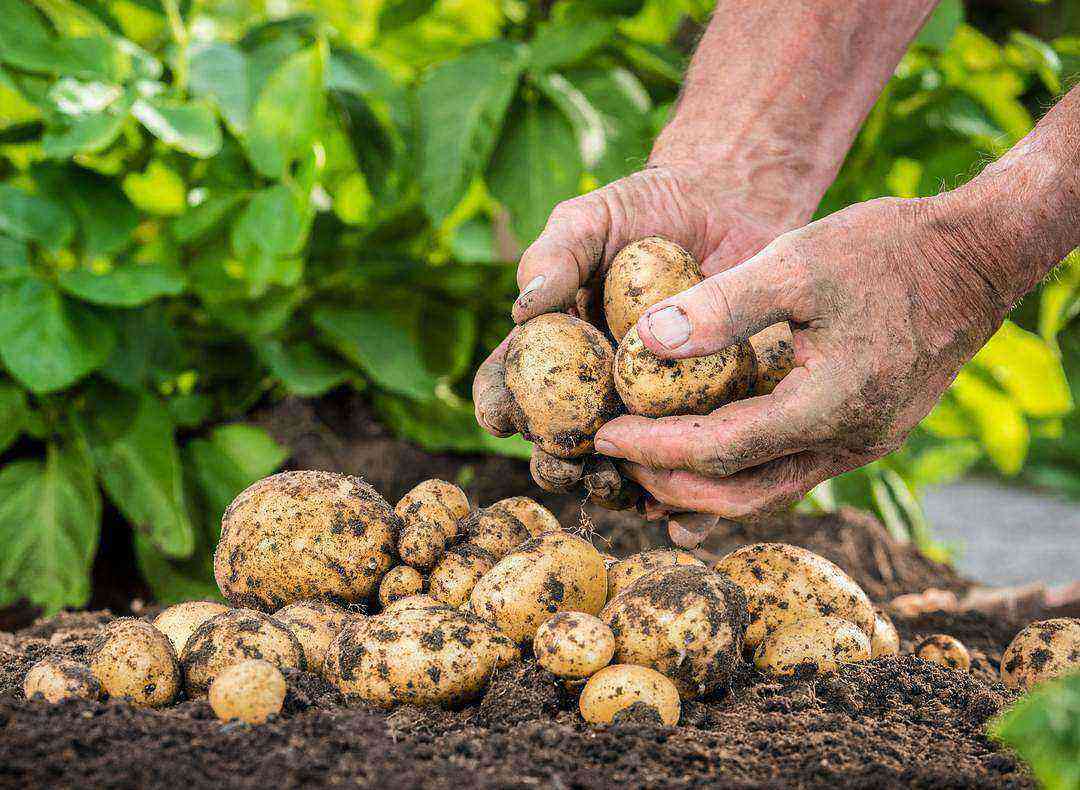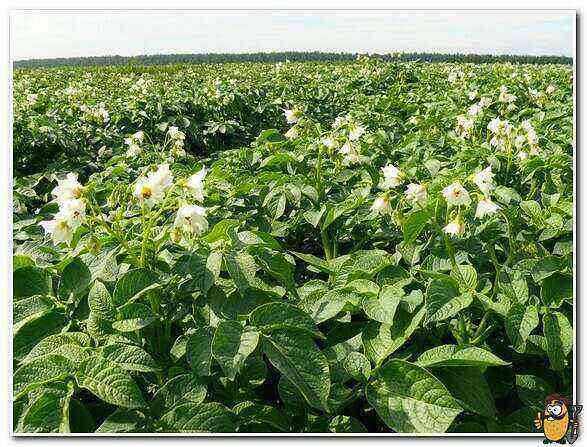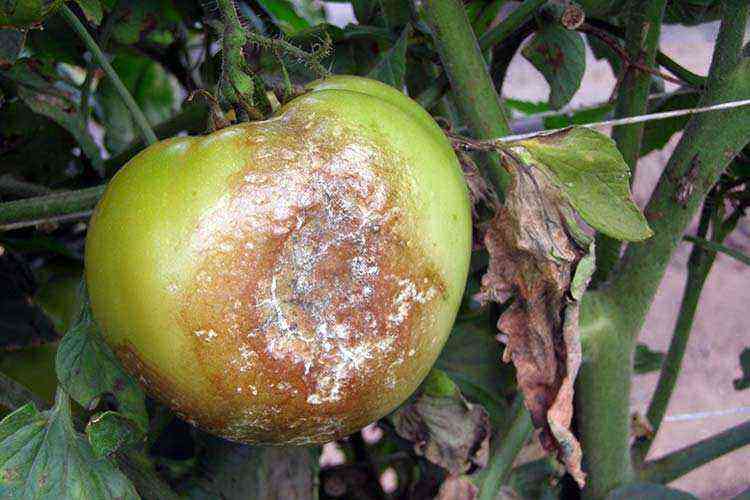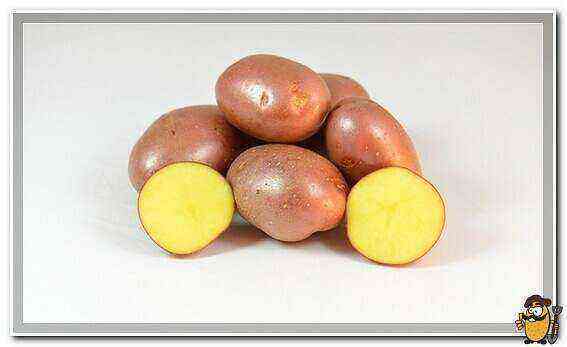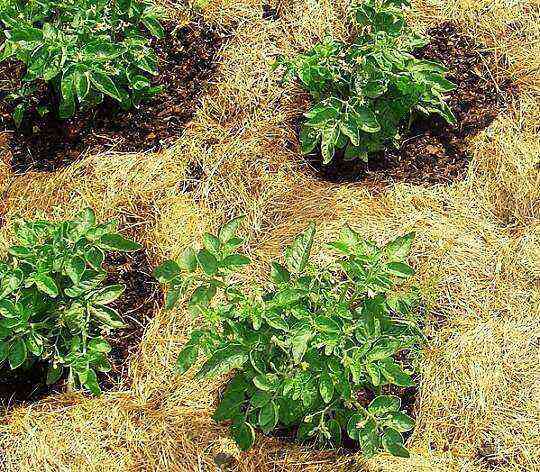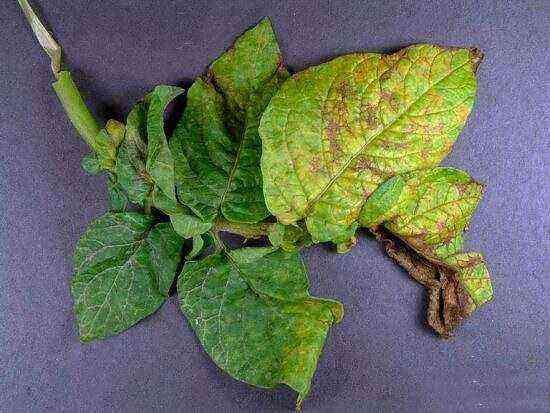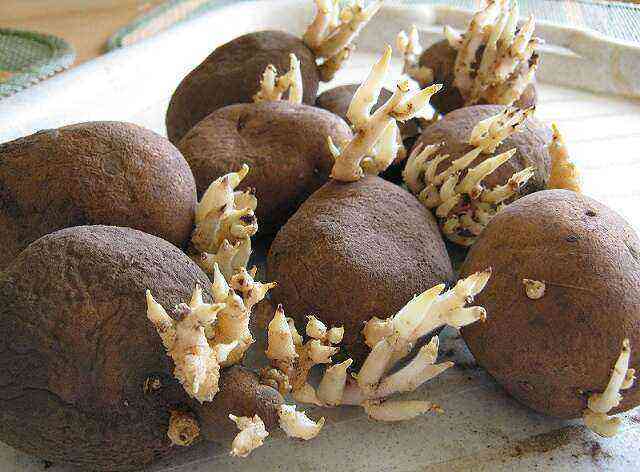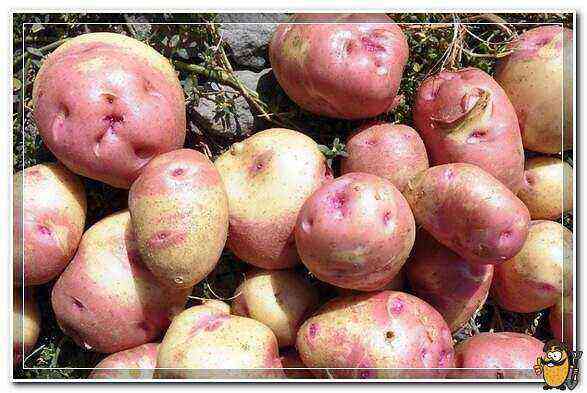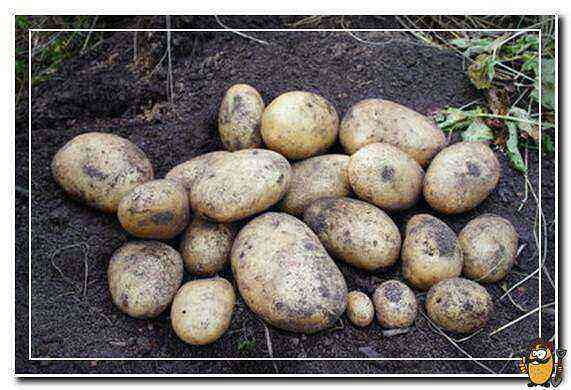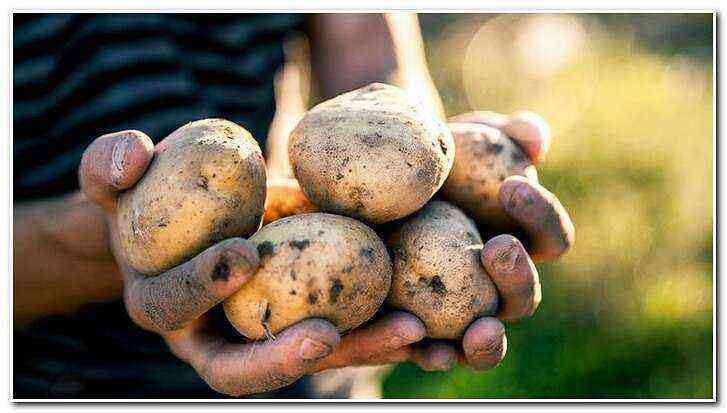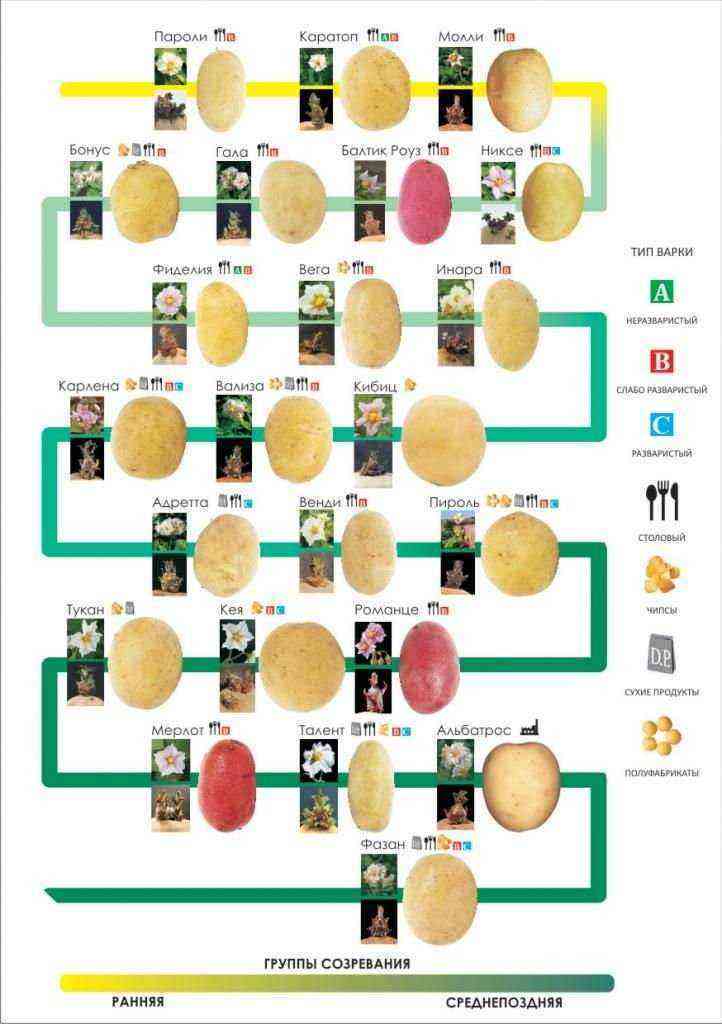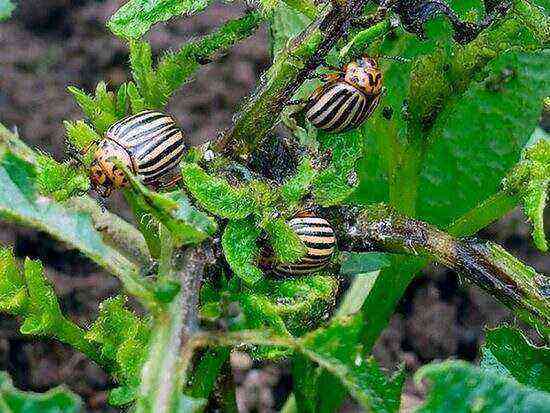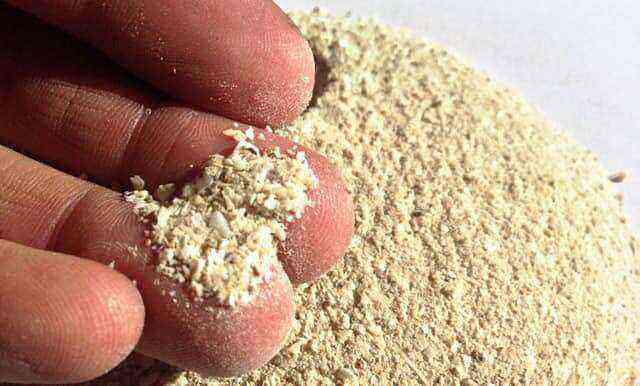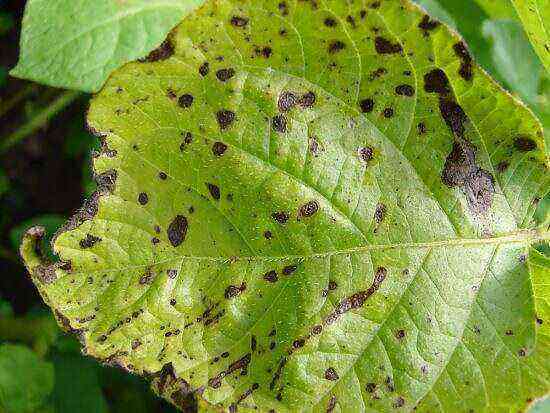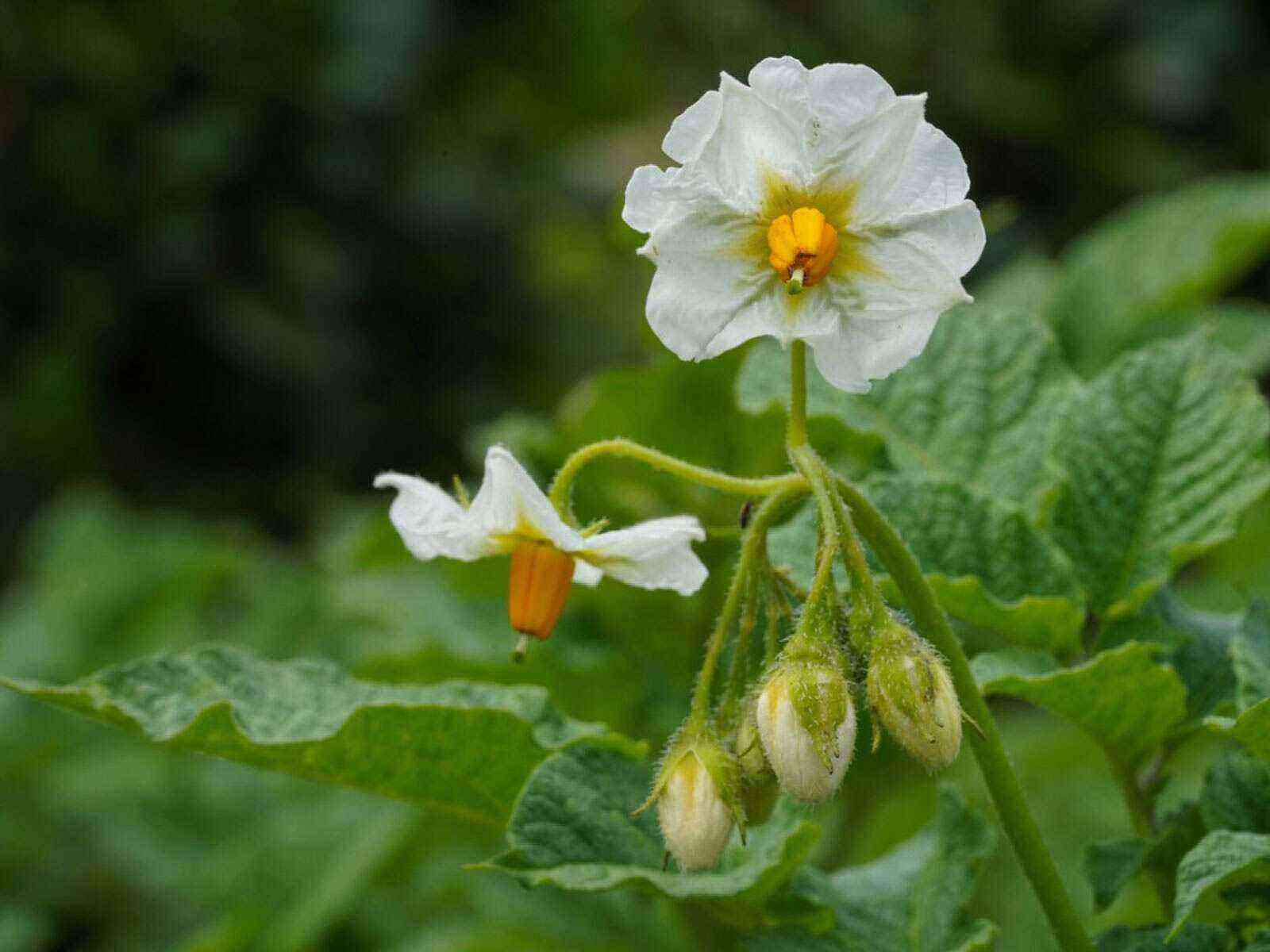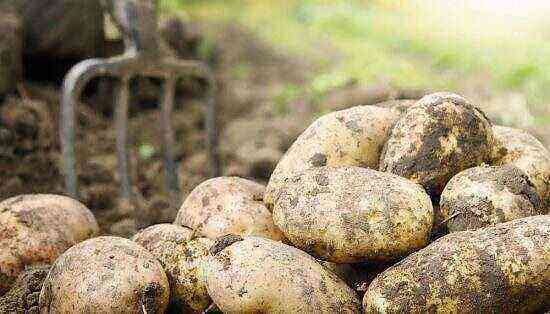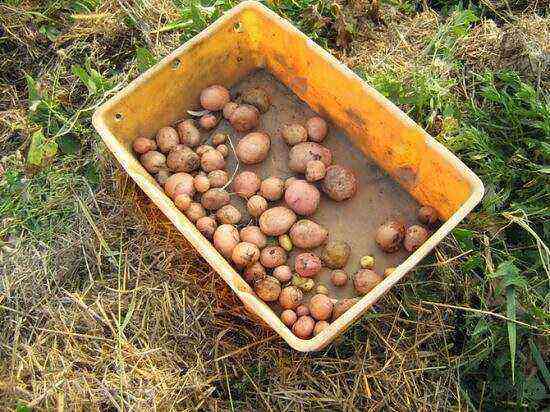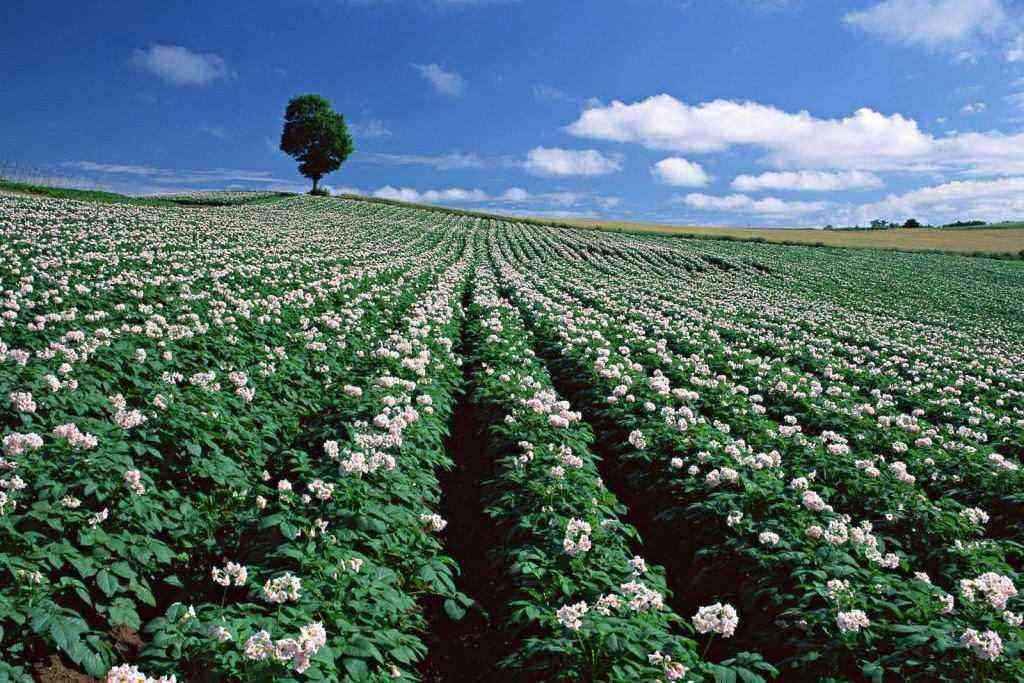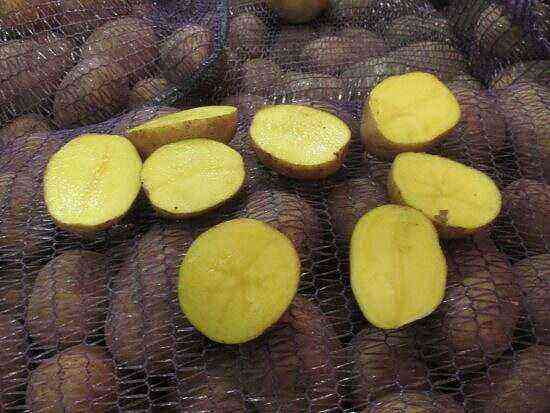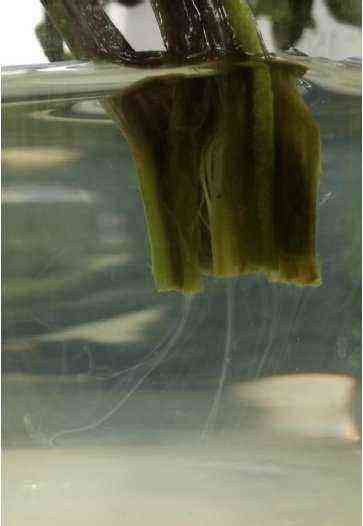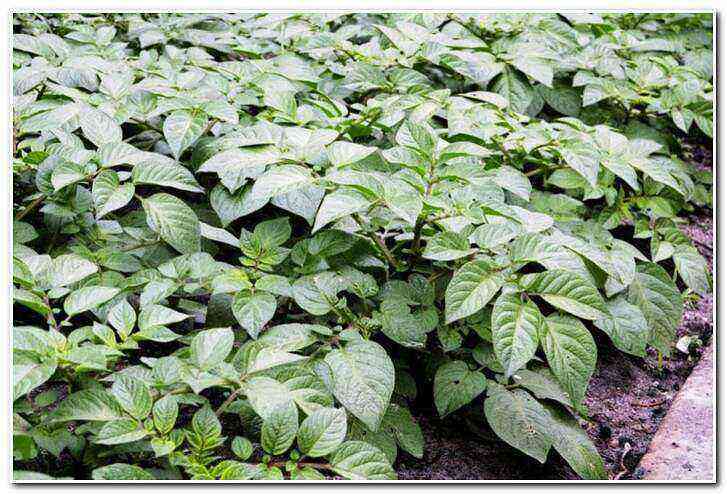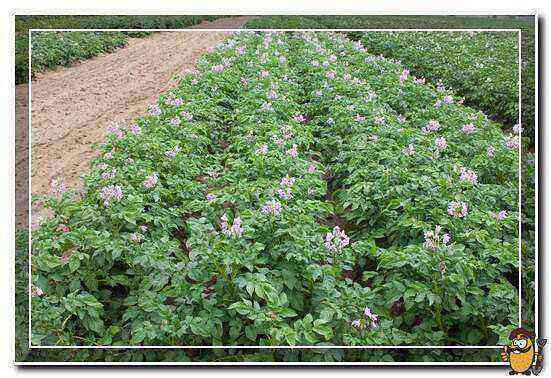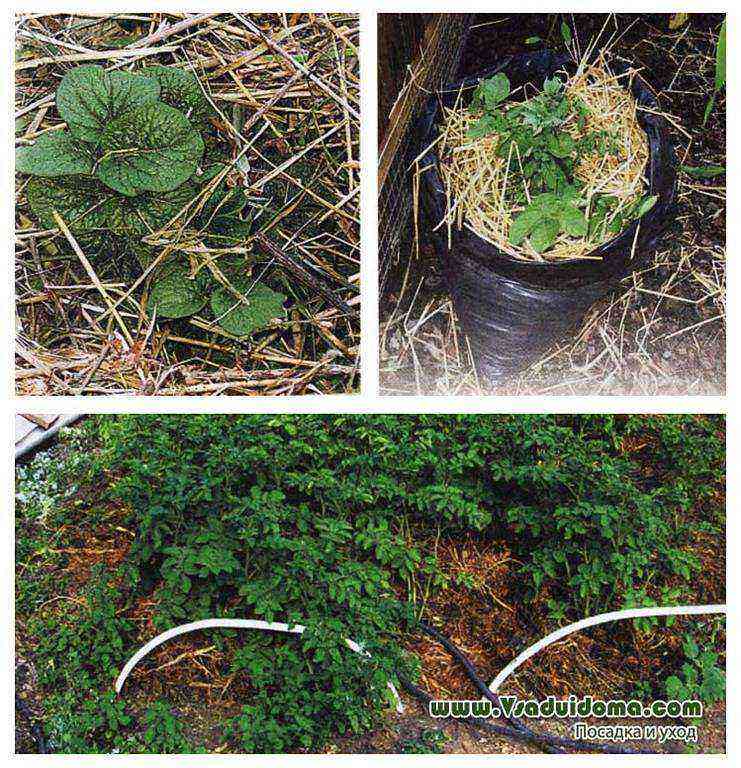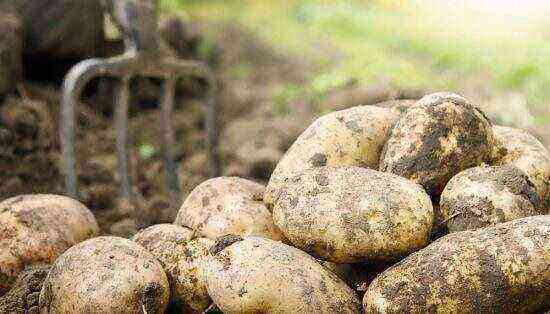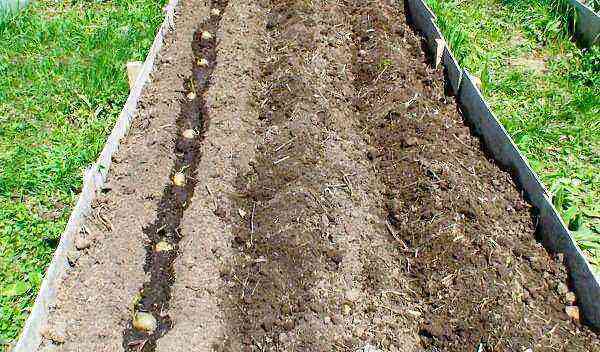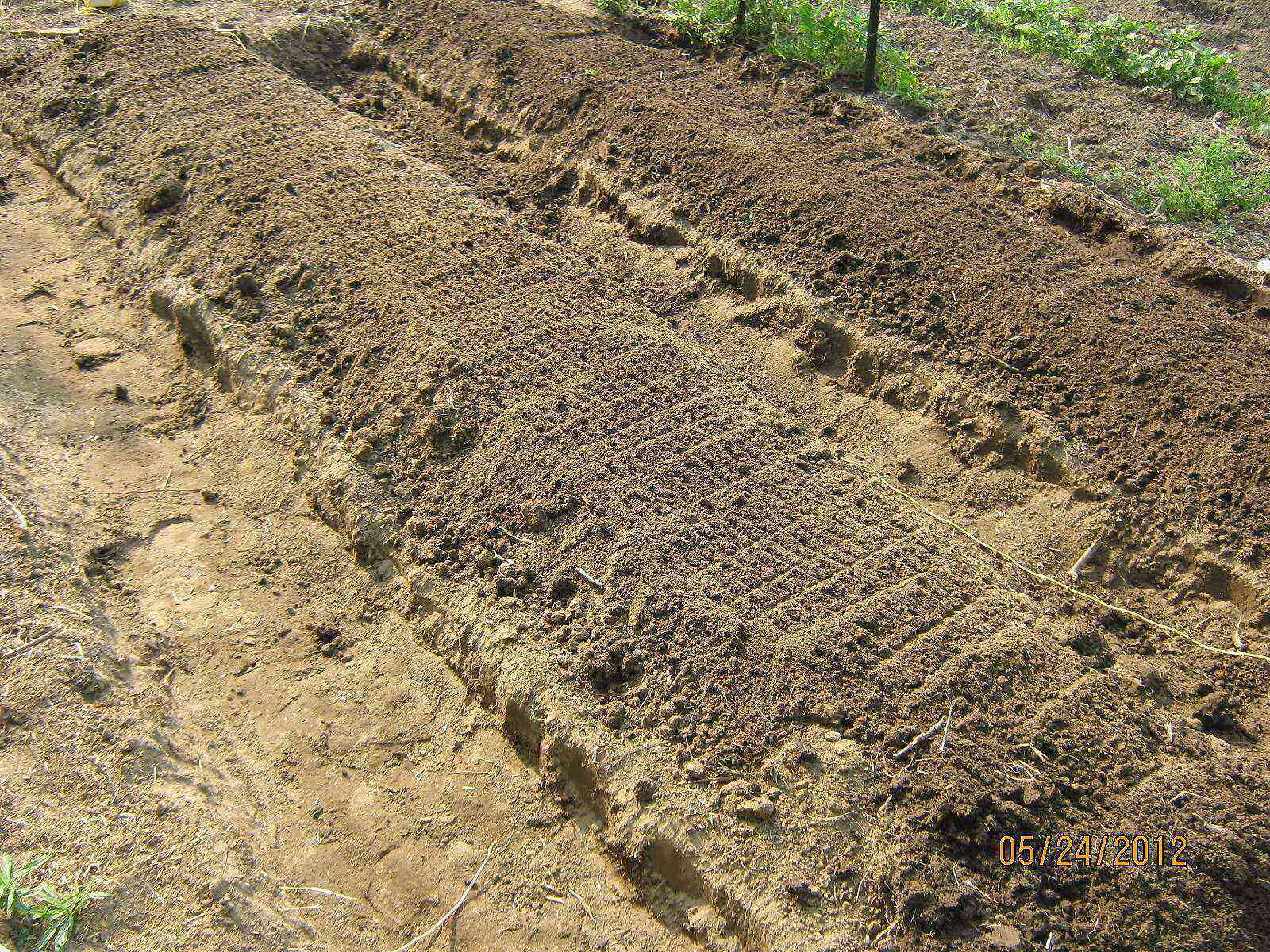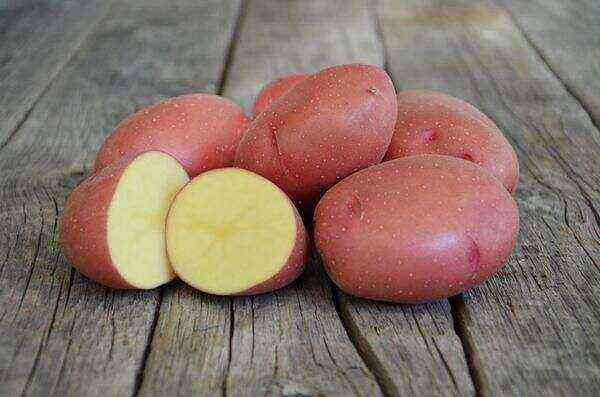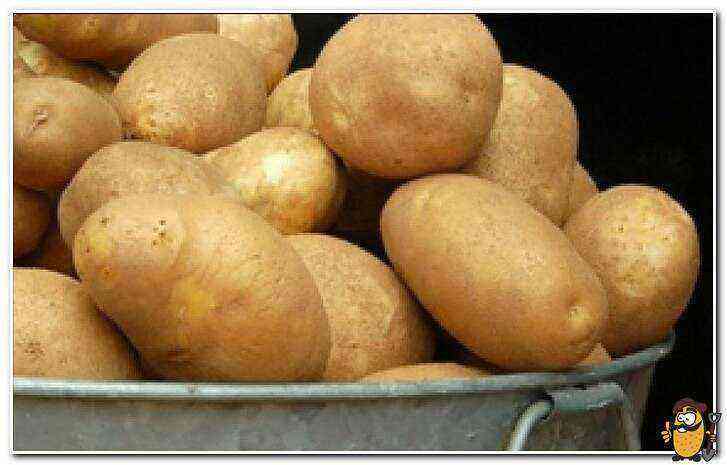Potatoes thrive best when nutrients are delivered to the tubers in small portions, but consistently. The plant receives up to 40% of useful compounds from tops, which absorbs nitrogen, sulfur, and other macro- and microelements contained in the air.
Agronomists from different countries are experimenting with foliar dressing of potatoes – spraying the tops with fertilizer solutions. For example, Finnish farmers enjoy record yields by applying foliar feed every 10-14 days throughout the growing season.
Rules for foliar dressing of potatoes
The intensity of assimilation of nutrients by the root system of potatoes largely depends on weather conditions and the chemical composition of the soil. Therefore, even on well-fertilized soils, plants may lack any element:
- at low air temperatures, insufficient lighting due to cloudy weather, nitrogen, phosphorus, sulfur, manganese, zinc are absorbed worse;
- in drought, plants receive less potassium, calcium, copper, boron from the soil;
- potatoes growing on acidic soils poorly assimilate phosphorus and molybdenum, and on alkaline soils, boron;
- on acidic sandy and peaty soils, potatoes often lack copper and molybdenum.
Foliar top dressing is a way to quickly make up for the lack of nutrients. In addition, it requires less fertilizer than root feeding. Most of all, potatoes of early varieties need to be sprayed with fertilizers, since due to the short growing season, the plants do not have time to assimilate all the nutrients from the soil.
But when carrying out foliar feeding, you must be guided by the rules:
- you cannot spray the tops with too concentrated solutions: they burn the leaves, and an excess of fertilizer is just as harmful as a lack. If there are doubts about what the plants lack, it is better to treat the tops with a less concentrated liquid than indicated in the recipe, and then, if necessary, feed the potatoes again;
- the interval between dressings is 10-14 days;
- the best time for foliar dressing is late evening. If the liquid hits the tops in bright sunlight, the droplets will act as lenses, causing the leaves to burn. In addition, in direct sunlight, the solution will dry out, and not be absorbed into the tops;
- during the day, you can spray the tops only in cloudy weather, and only if it does not rain in the next 2-3 hours. It takes at least 2 hours for the solution to be absorbed;
- foliar feeding should not be carried out if weather forecasters predict frosts;
- Plants assimilate nutrients faster if an adjuvant or ordinary laundry soap is added to the solution (40–50 g per 10 l). These substances reduce the force of surface tension, due to which fertilizers are better absorbed: drops of solution, falling on the tops, do not bounce off, but spread, covering the leaves with a thinnest film;
- drops should fall on the back of the leaves, where the stomata are located;
- the smaller the drops of the solution, the better. Ideally, the sprayed liquid should look like a fog;
- for dressing use soft clean water, preferably rainwater or from a spring, well, artesian well. If the water is chlorinated, it is defended.
If the potato leaves turn yellow prematurely (for example, due to a lack of iron or sulfur), then after foliar feeding they will not return to their previous appearance. But young leaves will grow strong and healthy.
Foliar dressing of potatoes in organic farming
Gardeners who practice exclusively organic farming methods usually carry out 2 fertilizing:
- before flowering – top dressing with herbal infusion. A bucket is 2/3 filled with grass, best of all with nettles. Half a liter of manure or a liter of compost is added there, then filled with water to the top and left to ferment for 4–7 days. A liter of strained infusion is mixed with 9 liters of water. Top dressing is carried out 2 weeks after germination;
- during budding or flowering – feeding with ash infusion: 2 liters of ash are poured with a bucket of boiling water and insisted for 1-2 days. Before use, 2 liters of infusion is mixed with 8 liters of water.
If the potatoes are frozen or damaged by hail, one more foliar top dressing with herbal infusion is carried out before flowering. It is good to add a decoction of horsetail to the infusion for treating damaged tops: it is rich in silicon and protects plants from powdery mildew.
Another option for feeding: 2 weeks after the emergence of shoots, the potatoes are sprayed with a solution of “Epina-Extra” (1 ampoule for 5 liters of water), and after another 2 weeks – with herbal infusion.
Ash infusion is not only rich in potassium and calcium, but also repels the Colorado potato beetle. If there are a lot of pests, 2 weeks after the first one, a second feeding with ash infusion is carried out.
Foliar dressing with mineral fertilizers
Before flowering, potatoes intensively grow tops, therefore they need nitrogen. “Favorite” foliar dressing of potatoes – urea: 50 g of urea is dissolved in 10 liters of water. The first feeding – 2 weeks after germination, the next – after another 2 weeks. It is allowed to add 75 g of potassium monophosphate and 5 g of boric acid to the solution.
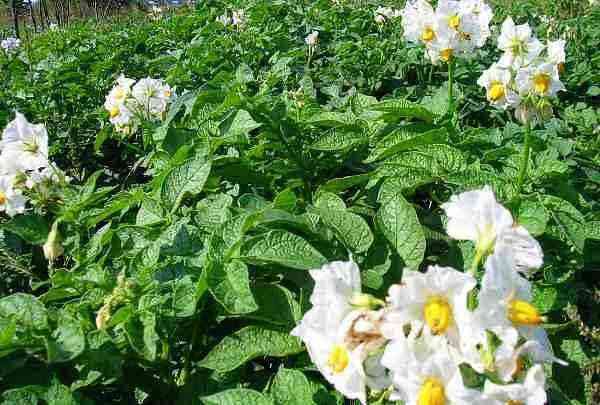
Urea top dressing can be replaced with a complex one: 50 g of nitrophoska per 10 liters of water. If the seedlings suffered from frost or hail broke them, they are in dire need of zinc and molybdenum. In such cases, some chelated fertilizer containing these microelements is added to the solution (Molybdenum Chelate and Zinc Chelate are sold in stores, but Brexil or Reakom-SR-Potato complex fertilizers are also suitable). It is useful to include a growth stimulator with amino acids in the composition of the first feeding: Poteytin, Megafol.
During the budding period, the potatoes are fed with phosphorus, nitrogen, potassium and copper: 20 g of superphosphate, 2 g of potassium chloride and ammonium nitrate each, 0,1 g of copper sulfate is dissolved in 10 liters of water.
After flowering, potatoes need potassium. Thanks to this microelement, tubers accumulate water, which is very useful in dry years. Top dressing recipe: Dissolve 30-40 g of potassium sulfate in 10 liters of water. Potassium sulfate increases the sugar content of the tubers. Sometimes potassium sulfate is replaced with potassium chloride. But it must be borne in mind that chlorine slows down the growth of potatoes, and some varieties are very sensitive to this element. Therefore, for foliar feeding, ash or potassium sulfate is preferable.
Two weeks after flowering, the potatoes are sprayed with a solution of boron and manganese: 5 g of boric acid and 1-2 g of potassium permanganate per 10 liters of water. Boron prevents the formation of voids in tubers, and manganese improves their taste. Such feeding prevents late blight disease.

